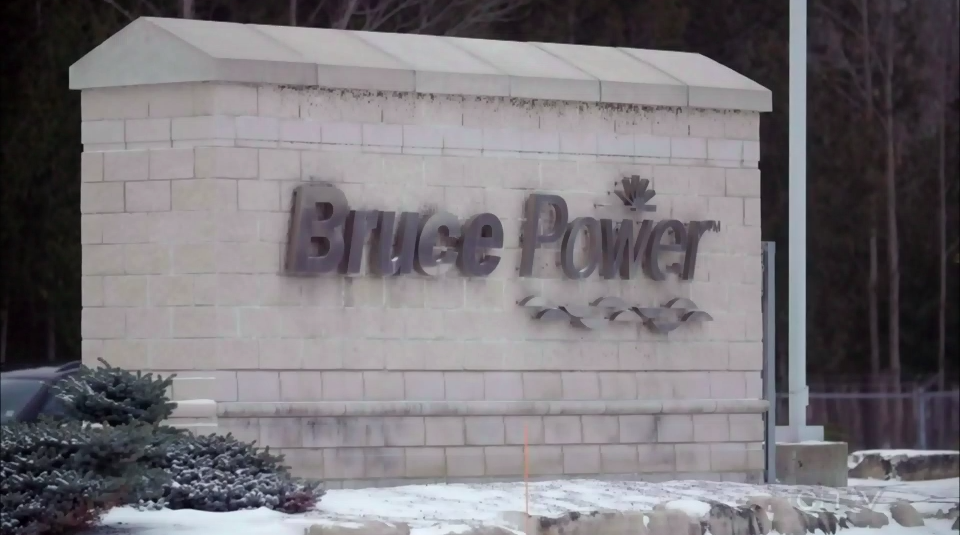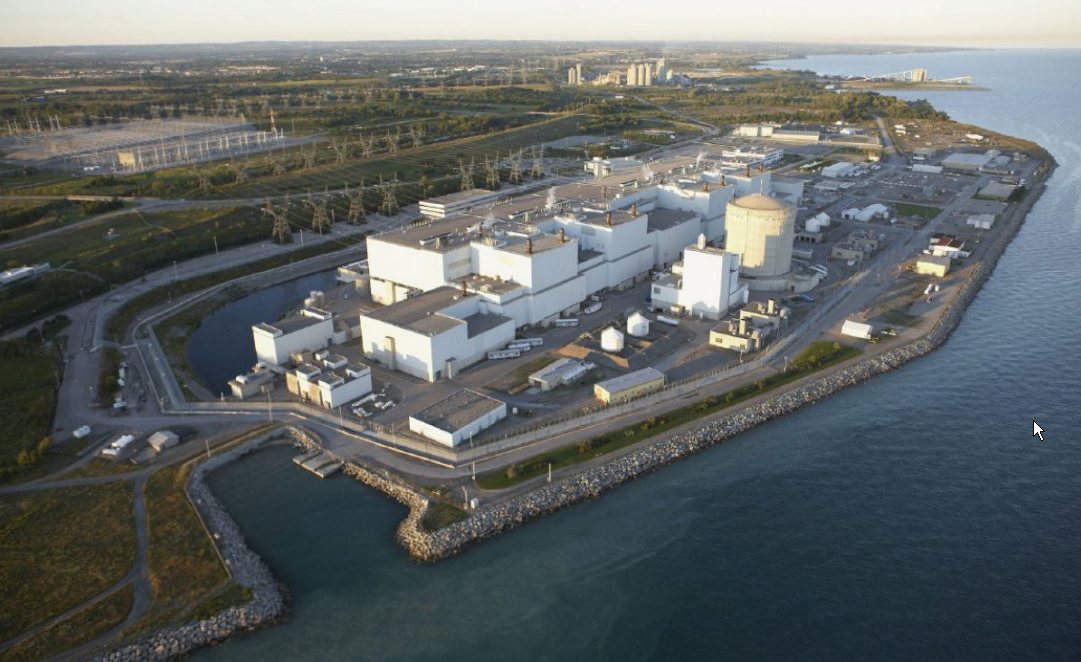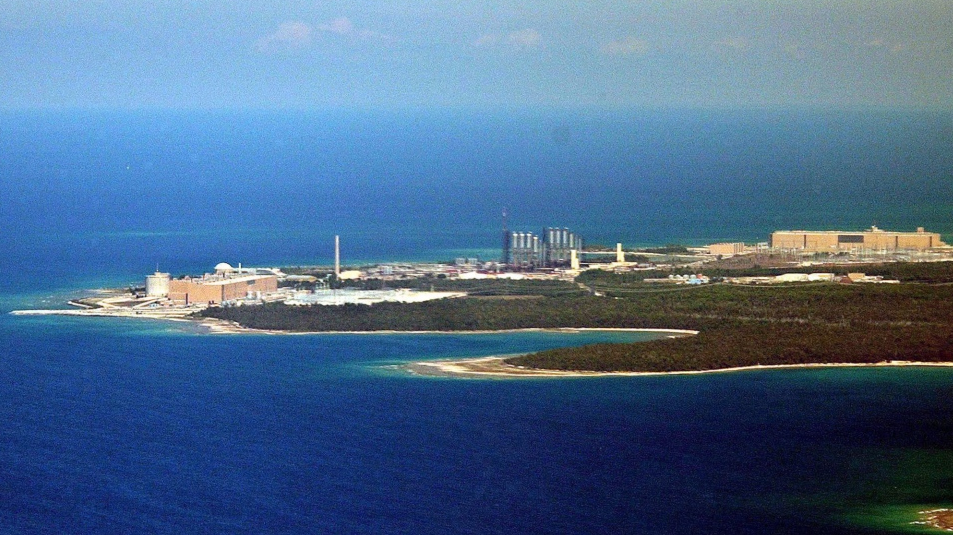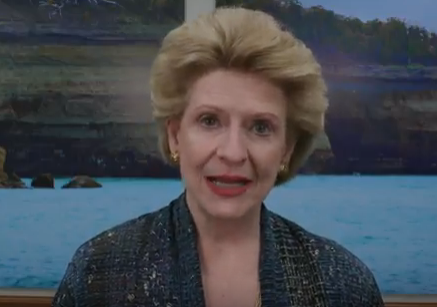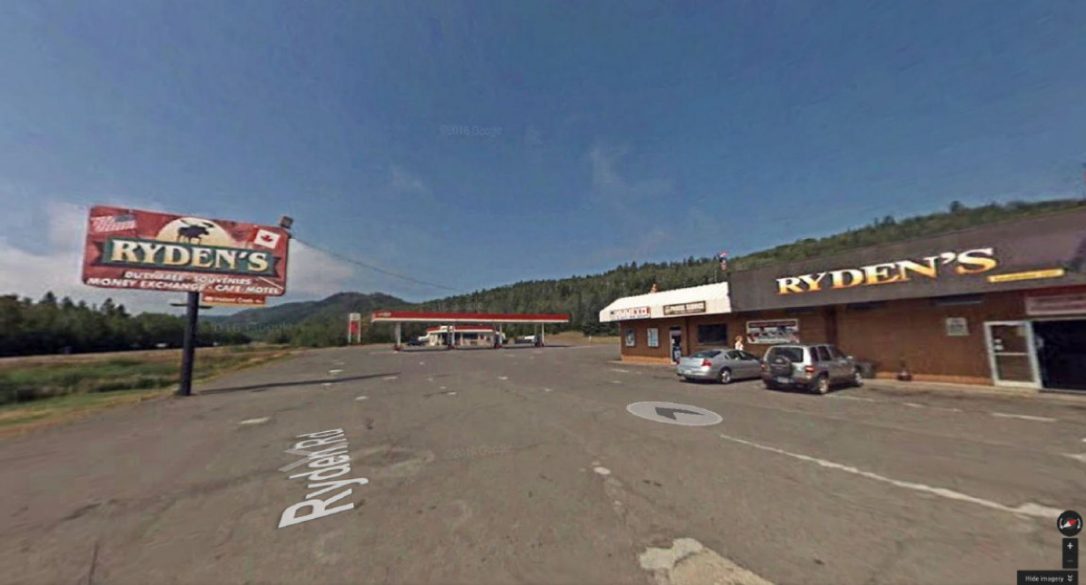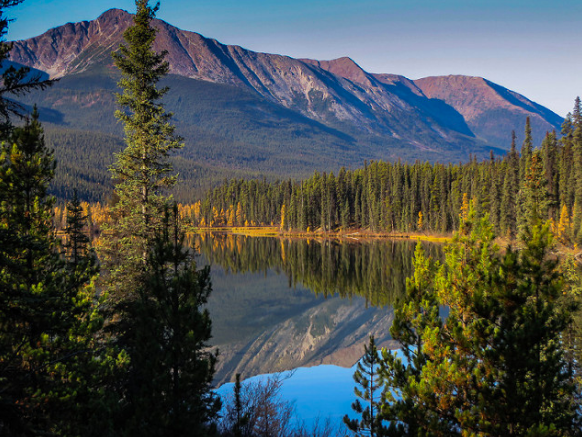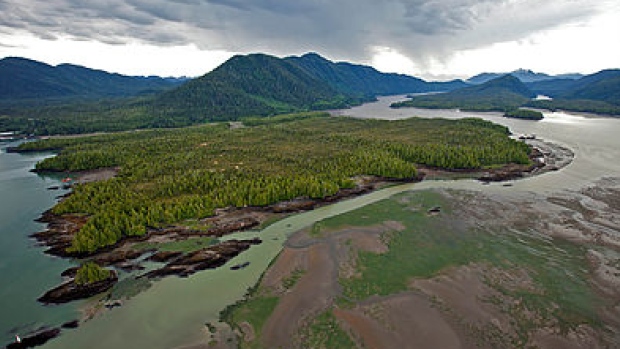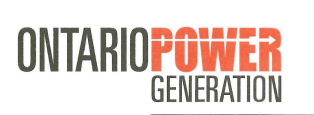Sarnia mayor weighs in after auditor’s less-than- glowing review of provincial preparedness
In a December 7th London Free Press article, Sarnia mayor Mike Bradley states that the lack of nuclear preparedness within Ontario is a frightening situation with limited staff and lack of active emergency management personnel. This only increases vulnerability if a large-scale emergency were to happen.
“It is essential in a province the size of Ontario that the government be ready to act in the event of an emergency,” Auditor General Bonnie Lysyk said in a statement.
Ontario First Nations Weigh Approval of Nuclear-waste Bunker
"This is not just a simple project. This is a forever project. It requires our people to think beyond seven generations, which is typically how we plan and think about these things," Randall Kahgee, a former chief and now lead adviser to the First Nations on nuclear issues, said in an interview.
Colin Perkel’s Globe and Mail article addresses the Saugeen Ojibway Nation's deliberation regarding the proposed nuclear waste dump on the shores of Lake Huron following Minister McKenna’s request for more information on Indigenous relations with OPG in August 2017.
International Joint Commission's First Triennial Assessment of Progress on the Great Lakes Water Quality
In their triennial report, the IJC states that the progress to address toxic chemical releases under the Agreement has been disappointingly slow. Eight chemicals of mutual concern have been recognized within the first three years and there have been no binational management strategies completed in regards to these chemicals. IJC’s recommendation for the Canadian and American governments include creating binational strategies with a clear set of timelines, policies and programs to work towards the development and implementation of innovative products and effective solutions.
W5: Nuclear Tomb, Part One
On April 1st 2017, Jill Taylor, President of SOS Great Lakes, was featured in the W5 story entitled “Nuclear Tomb” on CTV News. In this informative piece, Lloyd Robertson deconstructed myths and safety concerns regarding the site by interviewing politicians, CEOs and residents to learn the truth surrounding OPG’s proposed nuclear waste dump.
Since 40 million people throughout North America depend on the Great Lakes for drinking water, Kincardine inhabitants, as well as international politicians and residents, are concerned that a nuclear leak would be disastrous. The proposed deep geological repository is scheduled to be built only 1.2 kilometers from the shores of Lake Huron. Since 100% of DGRs have leaked globally, there’s no doubt that this one will too.
Distant Future Warnings: The Challenges of Communicating with Eternity
"Warning markers have crumbled, language has drifted, so any remaining messages are cryptic and indecipherable, governments have come and gone, documents have disintegrated, there’s no way of knowing that radioactive waste is buried here,” said Paul Kennedy, as he describes a hypothetical yet realistic scenario.
In this episode of Ideas, they explore warnings placed on nuclear sites and the possibility of it disappearing in future generations. This can be dangerous, especially when these radioactive contents become foreign.
Charting Canada’s troubled waters: Where the danger lies for watersheds across the country: Ivan Semeniuk
A national assessment of Canada's freshwater ecosystems has found that each of our 25 watersheds is facing environmental threats.
Out of 167 sub-watersheds 31% exhibit high levels of stress and 66% are data deficient.
The absence of a standardized national water monitoring program has left Canada unprepared to address increasing pressures on freshwater ecosystems.
“Water – despite its theoretical abundance – is probably the biggest looming problem in Canada,” said David Schindler, one of Canada’s most highly regarded freshwater scientists.
Great Lakes delegates to Tillerson: Oppose Canadian N-waste burial plan
32 members of Congress from the Great Lakes region have sent a letter to the Secretary of State, Rex Tillerson, asking that he block plans for permanent storage of radioactive waste near Lake Huron.
The letter states: "Any contamination whatsoever would pose disastrous repercussions as all of the lakes are connected to one another, and no barrier, man-made or natural, would be able to stop a potential catastrophe of epic proportions."
Michigan lawmakers ask State to fight nuclear disposal plan
A bipartisan group of lawmakers from Great Lakes states have sent a letter to Rex Tillerson, Secretary of State, urging him to oppose the plan to store nuclear waste on the shore of Lake Huron.
They want Ontario Power Generation to choose a site outside of the Great Lakes Basin for the burial of nuclear waste:
“We cannot let cost be the sole driving factor in this critical decision, as storing nuclear waste in the Great Lakes Basin bears far too great a risk that would be fundamentally devastating to an entire region,” the lawmakers wrote.
Congress pushes back against nuclear waste storage near Lake Huron
Michigan’s U.S. House delegation have joined a bipartisan group urging Secretary of State Rex Tillerson to stop Ontario Power Generation (OPG) from building an underground facility to store low- to intermediate-level nuclear waste near Lake Huron.
The letter, signed by 32 members of Congress, notes that 186 local, county, and state governments representing 23 million constituents in both the U.S. and Canada have passed resolutions explicitly opposing the project and argues that cost should not be “the sole driving factor in this critical decision.”
Ontario Power Generation insists on burying nuclear waste beside Lake Huron: Walkom
No matter how many times Environment Minister Catherine McKenna asks, OPG is unwilling to look at alternate sites to bury nuclear waste because they already found one.
OPG settled on Kincardine, a municipality on the shore of Lake Huron that hosts Bruce Power’s nuclear plant, where nuclear means jobs to local people and politicians.
In 2016, OPG took almost a year to come up with a strikingly inadequate report that did not identify alternative sites and their latest report (released on May 26 2017) still does not identify specific alternate sites.
To read the full article, click "Learn More"below:
CEAA To release Draft Report On fate of Nuclear Waste dump In Kincardine this summer
On May 26, 2017, Ontario Power Generation (OPG) released a 143 page report after 23 requests by the Canadian Environmental Assessment Agency (CEAA) for more information on their plan to bury nuclear waste on the site of Bruce Power, on the shore of Lake Huron in Kincardine ON.
Citizens groups argue OPG still has not made the case for this project and are concerned because the public will not be given the opportunity to comment on this latest report before the CEAA releases its draft report on the proposed nuclear waste repository this summer.
To read the full article, click "Learn More"below:
OPG's report did little to assuage their concerns about potential for catastrophic pollution of a major drinking-water source
The Canadian Environmental Assessment Agency requested additional information from OPG regarding their proposal to bury nuclear waste on the shore of Lake Huron . On may 26, 2017 OPG responded to the request stating the site is still best suited for the project. Colin Perkel reports: "the Canadian Environmental Assessment Agency, which has yet to make a final recommendation to Environment Minister Catherine McKenna on whether to approve the project. The agency, along with critics of the proposal, had slammed OPG’s previous report on feasible alternative locations as superficial and inadequate."
To read the full article, click "Learn More"below:
“No Nuclear Waste in the Great Lakes Backyard”
Republican and Democratic Lawmakers from the Great Lakes states sent a letter to Canada’s newly appointed Minister of Foreign Affairs (Chrystia Freeland) opposing Ontario Power Generation (OPG)’s proposed nuclear waste repository on the shores of Lake Huron.
The letter asks Minister Chrystia Freeland to require OPG to select a site that is outside the Great Lakes basin, saying “permanently burying nuclear waste so close to the drinking water of nearly 40 million people is just too risky.”
The letter also says OPG has purposely downplayed opposition to the potential waste site. 186 local, county and state governments in the U.S. and Canada have passed resolutions opposing the proposed nuclear waste repository.
plan to store 3.6 million pounds of nuclear waste less than 100 ft from the Pacific Ocean has been put on hold
In 2015 a non-profit group called Citizens Oversight filed a lawsuit to revoke the decision by the California Coastal Commission to allow spent fuel from the San Onofre Nuclear Generationg Station (SONGS) to be buried on site, less than 100 ft from the shore of the Pacific Ocean.
At the beginning of April (2017), a week before a court hearing and after a Judge refused to dismiss the lawsuit, Southern California Edison, owner of SONGS, agreed to negotiate on relocating the radioactive waste away from the San Diego coastline.
Possible leak found at Washington nuclear site
Authorities investigate possible radioactive leak at Hanford nuclear waste site after tunnel collapse on May 9, 2017.
Radiation was detected on a robotic device known as a crawler that workers were pulling out of a nuclear waste tank and on a worker's clothing.
Decontamination procedures were followed and State officials are urging the US Department of Energy to investigate the incident and determine the safety of the site.
Nuclear emergency plans lacking in Ontario, groups allege
Over 40 public interest groups, including Greenpeace and the Canadian Environmental Law Association (CELA), claim that Ontario needs a better plan to deal with large-scale nuclear accidents on the Great Lakes:
“With more than half of Ontarians living near a nuclear station that could be harmed in the event of a nuclear accident, Ontario is unprepared for a large nuclear emergency on the Great Lakes," said Shawn-Patrick Stensil, a Senior Energy Analyst with Greenpeace.
These groups are calling on the Wynne government to fix flaws in emergency plans that were recently updated but are not based on a large incident and do not address (1) large scale evacuations, (2) providing drinking water if the Great Lakes are contaminated, or (3) supporting vulnerable communities.
FEDERAL GOVERNMENT WANTS TO KNOW MORE about Proposed nuclear waste site near lake huron
In the fall of 2016 Catherine McKenna requested more information from OPG about alternative sites for the burial of nuclear waste. On April 5 2017, the Canadian Environmental Assessment Agency (CEAA) issued another request to OPG.
The Agency chastised OPG for its superficial exploration of alternative locations, emphasized that indigenous peoples’ perspectives need to be better represented and wants more information about potential cumulative effects from radiation and radioactivity on deep groundwater.
Joint Declaration between the Anishinabek Nation and the Iroquois Caucus
The Anishinabek Nation and the Iroquois Caucus have made a Joint Declaration opposing the transportation of radioactive liquid from Chalk River Laboratories (Canadian nuclear research facility in Deep River, Ontario) to South Carolina and the abandonment of nuclear waste near the Ottawa River.
"The transportation and abandonment of nuclear waste within the territories has the potential to adversely affect these rights, areas, and activities. The potential for long-lived contamination to the environment and to all living entities is too great."
MP pushes for action on nuclear waste plan near Great Lakes
Windsor MP Brian Masse has asked that the federal government abandon the plan to bury nuclear waste in a Deep Geological Repository (DGR) on the shore of Lake Huron.
Masse suggested to MPs that the plan is “not only is it environmentally reckless, but it’s an increasingly significant diplomatic irritant with Canada developing a reputation as a free-rider on U.S. Great Lakes protection initiatives and investments."
To read the full article, click "Learn More"below:
Tunnel collapses at Hanford nuclear waste site in Washington state
Lindsey Bever and Steven Mufson from the Washington Post report: "Hundreds of workers at the Department of Energy’s Hanford nuclear site in Washington state had to “take cover” Tuesday morning after the collapse of 20-foot-long portion of a tunnel used to store contaminated radioactive materials."
To read the full article, click here:
Canadian Coalition for Nuclear Responsibility Statement
On May 6, 2017 Gordon Edward from the Canadian Coalition for Nuclear Responsibility stated,
"The Canadian Coalition for Nuclear Responsibility (CCNR) agrees with the Expert Panel that placing environmental assessments for nuclear-related projects under the sole jurisdiction of the Canadian Nuclear Safety Commission (CNSC) is not in the public interest. "
To read the full statements, click "Learn More" below:
"The Plan to Build a Million-Year Nuclear Waste Dump on the Great Lakes"
Kate Lunau and Daniel Oberhaus from Motherboard (Vice) explore of nuclear power in Ontario and the the proposed deep geologic repository in Kincardine.
"A leak so close to Lake Huron, [Jill] Taylor, [President of SOS Great Lakes] believes, could be disastrous. "The Great Lakes are the largest freshwater body on the planet," said Taylor, who thinks OPG should keep all of its nuclear waste away from the Great Lakes. She also argues the waste should stay retrievable, so future generations can keep tabs on it."
To read the full article, click "learn More" below;
Great Lakes Residents Pack IJC Public Meetings to Voice Their Thoughts and Concerns
Sally Cole-Misch, IJC writes, "At five IJC public meetings on the Great Lakes held March 21-29 around the basin, standing-room-only crowds packed venues in Canada and the United States to learn from presentations about topics reflecting local issues as they relate to the health of the Great Lakes ecosystem, and to share their own thoughts and concerns."
"Canadians should care about nuclear contamination in the Great Lakes"
Andrew Reeves, This Magazine, writes: "Should we be worried about radioactive waste leaching into the Great Lakes? Absolutely we should. Gauging the extent of nuclear contamination in the Great Lakes is daunting. Yet a report released in March 2016 by the Canadian Environmental Law Association proposed a simple solution: List radionuclides, a form of unstable radioactive atom, as a “chemical of mutual concern” under the Great Lakes Water Quality Agreement."
To read the full article, click "Learn More", below:
Interview with SOS Great Lakes
1380 AM WpHM interviews SOS Great Lakes Director, Ellen Dailey regarding the proposed Deep Geologic Repository .
To listen to the full interview, click "Learn More" below:
Feds criticize vague report on burying nuclear-waste near Lake Huron
"OPG insisted the Bruce nuclear plant near Kincardine, Ont., was the best location for its proposed deep geologic repository -- a massive underground rock bunker about 1.2 kilometres from Lake Huron."
"In a 15-page request for information, the federal agency calls OPG's analysis of other sites vague and superficial. The utility should have "objectively and rigorously" analyzed potential problems with other locations -- from construction of the repository to its ultimate closure, the document states."
To read the full article, click Learn more:
Time to clean up OPG's flawed approach to nuclear waste burial: Wells
Jennifer Well, the Toronto Star, Reports:
"The questions for OPG in its advocacy for the Bruce site have always been these: Is it the right rock? And is it the right place?
The proximity to the Great Lakes has drawn loud protest from both sides of the border in defiance of OPG’s own claim that the issue has not generated “large volumes of curiosity.” On Thursday, Democratic Congressman Dan Kildee again made his opposition to the project known, tweeting that “there is a growing opposition to Canada burying nuclear waste so close to the #GreatLakes, Your voices are being heard.” Kildee represents Michigan’s Flint Township where the water crisis has kept tainted drinking water top of mind."
To read the full article, click "Learn more" below:
"Ontario Power Generation’s latest report on its proposed nuclear waste chamber near Lake Huron focuses on science and geology, which leaves a lot of issues unaddressed"- Sarnia Observer
University of Western Professor Erika Simpson explores the issues surrounding transportation of the nuclear waste and the proposed Deep geologic Repository:
"OPG’s report considers a time frame of a million years. To put that in context, it explains the crystalline rock of the Canadian Shield is more than a billion years old, and the sedimentary rock of southern Ontario is 354 million to 543 million years old. But wasn’t it only 10,000 years ago that retreating ice sheets carved the Great Lakes’ water basin?"
To read the full article from the Sarnia Observer, click "Learn More" below:
CTV’s W5 Weighs in on OPG’s Nuclear Waste Dump
CTV’s famed investigative program, W5, examined OPG’s proposed nuclear waste dump on Lake Huron. Click below to watch Jill Taylor, President of SOS Great Lakes, Rep. Dan Kildee, other opponents of the project, and citizens discuss the proposed nuclear waste dump.
To watch a preview on the feature, click the video below:
To watch the full video, click "Learn More" below:
The Fight to Protect the Great Lakes: Sen. Debbie Stabenow Speaks Up.
With the recent news that funding to Great Lakes monitoring and protection in the US will be cut by nearly 97%, politicians, citizen, and activists are fighting to find ways to protect the world's greatest source of freshwater. Sen. Stabenow has spoken up against OPG's proposed DGR and is now continuing to encourage people to help keep the water clean.
Watch he video below to see more. And click "Learn More" to read the full article by The Van:
"Lawmakers united against nearby Canadian nuclear waste site"
Brenda Battel from Huron Daily Tribune writes: "Ontario Power Generation announced this winter that a study of alternative sites showed that the Ontario site was better than two locations that had been studied.
The Canadian Ministry of Environment and Climate Change expects to make a decision this summer or fall on where to house the dump.
Michigan Sens. Gary Peters and Debbie Stabenow, both Democrats, introduced a resolution last week in the Senate opposing the dump."
To read the full article, click Learn more below:
Senators, Congressman introduce resolution opposing nuclear waste storage site in Great Lakes Basin
Upper Michigan Source Reports: "U.S. Senators Debbie Stabenow (D-MI), Gary Peters (D-MI) and Congressman Dan Kildee (MI-05) today introduced resolutions, in both the House and Senate, expressing opposition to construction of a nuclear waste repository less than a mile from Lake Huron in Ontario."
To read the full article, click Learn More below:
Lawmakers ask Trump to stop nuke waste storage plan
The Detroit News reports: "The resolution, sponsored by Democratic Sens. Debbie Stabenow of Lansing and Gary Peters of Bloomfield Township, and Rep. Dan Kildee of Flint Township, says the United States and Canada should together develop a safe and responsible solution for the long-term storage of nuclear waste."
To read the full article click Learn More below:
Canadian mayors concerned about potential cuts to Great Lakes protection funding
CBC News explains, "Ontario mayors continue to sound alarm bells over proposed budget cuts in the United States that would gut programs designed to protect the Great Lakes.
Budget proposals drafted by the administration of U.S. President Donald Trump include slashing funding for the Environmental Protection Agency by 25 per cent."
To read the full article, click Learn more below:
WIPP Accident "one of the costliest"
The cleanup of a 2014 explosion in the nuclear waste repository in Carlsband, New Mexico has become a costly, time consuming, long-term project. Ralph Vertabedian (Los Angeles Times) reports: "the explosion ranks among the costliest nuclear accidents in U.S. history, according to a Times analysis. The long-termcost of the mishap could top $2 billion, an amount roughly in the range of the cleanup after the 1979 partial meltdown at the Three Mile Island nuclear power plant in Pennsylvania."
To read the full article, click here:
Misleading OPG survey
The Toronto Star shares Colin Perkel's story on the misleading survey conducted by the Gandalf Report.
Perkel writes, "While Ontario Power Generation (OPG) stands by the poll of 805 people, critics insist an analysis shows the utility distorted its findings in submissions to the federal government.
Among other things, poll questions provided false or misleading assumptions designed to skew the response in favour of the deep geologic repository, they said."
"Survey showing support for nuke waste bunker near Lake Huron 'misleading'"
In April of 2016, on behalf of OPG, the Gandalf Group conducted a poll of 805 Ontarians to assess how the public feels about the proposed DGR (the plan to bury up to 400,000 cubic metres of radioactive nuclear waste less than 1 km from Lake Huron). OPG misrepresented the findings to the government, to the media, and to the public.
Colin Perkel (Canadian Press) writes, "While Ontario Power Generation stands by the poll of 805 people, critics insist an analysis shows the utility distorted its findings in submissions to the federal government."
To read the full article, click "Learn More":
"Two twelve-year-old girls yell at an officer overseeing nuclear waste transport to the WIPP facility in 1999."
Source: Sarah Martone/AP
Mic Media Reports on the Deep Geological Repository
Brianna Provenzano (Mic Media) reports on the issues surrounding the proposal of OPG's Deep Geological Repository:
"The fate of the nuclear waste has hung in the balance for years. In 2007, the plans were kicked to a joint review panel for investigation amid public concerns about the potential environmental disaster that would ensue if the repository were to begin leaching its radioactive contents into the Great Lakes. Although the panel released its report in 2015 recommending that the plans move forward for approval, private citizens have only gotten more vocal in their desire not to see the vault built."
To read the full article, click "Learn More" below:
OPG report on planned nuclear waste bunker blasted as ‘inadequate’
Colin Perkel, The Canadian Press asks Rod McLeod, Director of SOS Great Lakes to comment on OPG's response to the Minister of Environment and Climate Change: "'This is the fifth time that OPG has side-stepped a specific government request to study alternative sites,' Rod McLeod, a director of SOS Great Lakes, said in a statement. 'At what point is the federal government going to stand up and do its job?'
Critics are also angry that the government is allowing just 30 days for public comment on a report OPG had the better part of a year to produce.
'It appears to me the government perhaps does not care to hear what the public thinks,' McLeod said."
"SOS [Great Lakes] slams OPG plan"
Crag Power from Bayshore Broadcasting discusses the DGR with Director of SOS Great Lakes, Rod McLeod:
"Rod McLeod, a former Ontario Deputy Minister of the Environment AND Director of SOS Great Lakes feels OPG is in violation of Canadian Environment Assessment Laws.
He says from day one OPG has failed to look at alternate sites and the law requires them to do so stating the decision to place a DGR at the Bruce site is not theirs to make; he says it's ultimately up to the Federal Government and Cabinet to make that decision."
Readers say, "Nuclear Dumpsite idea [is] Dangerous"
On Sunday, January 15, 2017 The Toronto Star shared readers' opinions regarding OPG's proposed DGR.
"The fact that there are only three deep nuclear waste dumps on our entire planet that have held radioactive nuclear waste and all three have leaked should be cause for alarm.
At what cost do we risk the Great Lakes? I cannot believe that this is the safest alternative. I do believe that it may be the easiest, the cheapest and the quickest – unless something unintended and unfortunate happens. I do not want my government to take that chance."
To read the Readers' Letters, click here or "Learn More" below:
Source: The Toronto Star
"OPG identifies most of Ontario as alternate 'location' to bury nuclear waste - article by jennifer wells
11 months ago, Ontario Power Generation (OPG) was asked by the federal government to identify actual locations for alternate sites for the burial of nuclear waste in a Deep Geologic Repository (DGR).
The report released by OPG cites two alternate locations for the DGR, one in "crystalline rock" and the other in sedimentary rock.
The alternate site in crystalline rock was defined by fourteen GPS coordinates, which include the location of a store in Minnesota on the Canada/ U.S. border, a spot in Lake Erie, and a two story home near Young St. and Davisville Ave. Matthew Cole at the Star found that the fourteen GPS points identified by OPG incorporate 726, 052 square kilometres of land, covering 73 percent of Ontario.
Rod McLeod, director of SOS Great Lakes, was interviewed by the Star. ' “OPG has never answered the question,” McLeod says of the years-long location discussion. He spools all the way back to 2003. “They didn’t answer it then, they didn’t answer it at the first hearing in 2013, they were given a second chance at a new hearing in 2014. They are simply stalling.” '
It is up to Catherine McKenna, Minister of the Environment and Climate Change, to decide if OPG has fulfilled their obligations in identifying actual alternative locations for the DGR.
OPG report on planned nuclear waste bunker blasted as 'inadequate'
On January 3rd, 2017, after 11 months, Ontario Power Generation (OPG) responded to Catherine McKenna’s request for additional information on alternative sites for the burial of this nuclear waste.
This report is being criticized for three main reasons:
OPG, once again, fails to clearly identify specific alternative sites for the burial of nuclear waste.
OPG states that transporting the radioactive material would be more dangerous than burying it at the Bruce site, however there is serious concern over the failure of similar storage bunkers to contain hazardous waste.
OPG has claimed that people in Ontario have little interest in the project when in fact there is on-going, widespread public opposition in Canada and the U.S.
Critics are also concerned that while OPG took 11 months to create this approximately 500 page report, the public is only given a 30 day comment period to respond.
Open Letter To The Honourable Catherine McKenna - Regarding the OPG December 2016 Response on The DGR1, Kincardine, Ontario
Dear Minister McKenna:
It is time for the Canadian government to do its job and enforce the Environmental Assessment Act. This is at least the fifth time OPG has been asked to identify specific alternate sites and they have again refused to do so, as they have done every time. Their entire proposal should be rejected now.
The opportunity for public input on the OPG Response is wholly inadequate. OPG has had 11 months since your first letter to answer your questions and you have given us 30 days to respond to over 500 pages of material. This is unfair to the public and to the government if you truly want meaningful public input.
To Read the entire letter click here or "Learn More"
Source: CTV News
OPG Responds to the Minister's Request for Information on Alternative sites
The Ontario Power Generation has responded to the Minister's request to provide alternative location for the proposed Deep Geological Repository (DGR) where Low and Intermediate Level Waste would be stored.
CTV News reports: "Responding to a request by Environment Minister Catherine McKenna, Ontario Power Generation said it had examined two alternative sites - one in a crystalline rock formation in north-central Ontario and the other in limestone in the province's south. The specific locations were not disclosed because of the study's hypothetical nature, company spokesman Kevin Powers said, adding that both are farther from the lake than the Bruce Power site."
Decision deadline for proposed DGR extended
CEAA announced: the time limit for the issuance of the Decision Statement for the proposed DGR project has been extended by 243 days.
Scott Miller explores this story on CTV London.
Watch the video below to see CTV's coverage of the story and Director of SOS Great Lakes, Eugene Bourgeois express his opposition to the proposed Project.
Source: Superior Watershed Project
New Reporting Tool created after record high waves cause coastal damage
November storms bring record high waves in the Great Lakes causing damage to the shores of Lake Superior. According to the Superior Watershed Project, "The recent storms combined with high water levels have led to an increase in coastal erosion and damage to waterfront."
"SWP has developed the Great Lakes Coastal Reporting Tool which allows users to upload information and photos as it pertains to storm damage."
Source: WIPP
Waste Isolation Pilot Plant (WIPP) Roof Collapses
Albuquerque Journal outlines the details of the incident: "It was just before 2:30 p.m. on Nov. 3 at the Waste Isolation Pilot Plant. Still recovering from a radiation accident nearly three years ago, managers of the nation’s only deep geologic repository for defense nuclear waste had just two weeks prior decided to shut down the far south end of the mine after the salt ceiling collapsed in two places."
Wildlife Canada, Nahanni Range Road, Yukon
Auditor General Comments on Environmental Assessment
Wildlife Conservation Canada states:
"In the wake of yesterday’s damning report by Ontario Auditor General Bonnie Lysyk in which she directed harsh criticism at the province’s environmental assessment (EA) program, environmental organizations are encouraged by Environmental Minister Glenn Murray’s commitment for ‘substantive reforms’ to modernize Ontario’s environmental assessment process.
As noted by the Auditor General: “Ontario’s environmental assessment process needs to be modernized and aligned with best practices in Canada and internationally. Because the Act is 40 years old— and is, in fact, the oldest environmental assessment legislation in Canada—it falls short of achieving its intended purpose.”
Radioactivity in Port Hope, ON. Source: HazMat
CLEANING UP PORT HOPE
HazMat discusses the controversial issue of the Port Hope cleanup in Ontario. HazMat explains "Five representatives of the CNSC and members of the public heard presentations on what has been accomplished to date on the facilities that will permanently house the historic low-level radioactive waste that originated from the Eldorado radium extraction facility that first started operations in the town in 1932."
Click "Learn More" to read the original article.
TVO's The Agenda with Steve Paikin Discusses Radionuclides in the Great Lakes
On November 17, Michael Rinker (CNSC), Theresa McClenaghan (CELA), John Marsden (Environment Canada), and Mark Mattson (Waterkeeper) join Steve Paikin in discussing their concerns regarding radionuclide contamination in the Great Lakes, emergency protocols, and protection measures. They also discuss why radionuclides should be on the list of Chemicals of Mutual Concern.
To watch the video, click "Learn More":
What is the Blue Dot Project?
"Around the world more than 110 nations recognize the right to live in a healthy environment. But not Canada. That’s about to change.” - The Blue Dot Project (David Suzuki Foundation).
The Blue Dot project has a plan to create “lasting change for generations” through community and political action. SOS Great Lakes also believes that future generations have the right to live in healthy environments.
To learn more about the Blue Dot project, click the button below:
Rally for Standing Rock. Source: CTV News London
Solidarity with standing rock
Saugeen and Chippewa Native Bands march in solidarity with Standing Rock on Tuesday in Southampton, ON.
Communities in and around Southampton are fighting their own battle to protect water from contamination.
Watch Scott Miller discuss OPG’s proposal to bury nuclear waste on the shore of Lake Huron and the Chief of Saugeen First Nations, Lester Anoquot, speak to this issue and the importance of water and water protection:
Lelu Island. Source: CBC News
candian Environmental Assessment
CBCRadio (The 180) discusses the Canadian Environmental Assessment Process.
What are your thoughts about the process? Listen to the feature here:
The International Joint Commission (IJC)
International Joint Commission holds poblic meeting at the great Lakes Public Forum
Numerous people and organizations, including SOS Great Lakes, presented their concerns regarding the Great Lakes Water Quality Agreement. Many asked the Panel that radionuclides be included as a Chemical or Mutual Concern.
Source: The Toronto Star
WHERE WILL CANADA BURY IT'S NUCLEAR WASTE?
Tom Walkom (The Toronto Star), writes:
Previous attempts to find places where such waste could be buried had foundered over local opposition. So the new body was given two tasks.
First, find a place geologically suitable for a nuclear dump; second, find a place that wanted it.
Politically, the second criterion is more important than the first. That became evident in February when the new federal Liberal government announced that its final decision on another radioactive dump plan scheduled for Lake Huron, this one designed to store so-called low and intermediate-level nuclear waste, would be delayed until at least the end of 2016.
That dump, while okayed by local councils, is opposed by many residents.
The so-called KBS-3 method, suggested in Sweden in the 1980s, proposes placing spent fuel inside hermetically sealed copper canisters in a bentonite clay environment in crystalline bedrock at a depth of 500 meters. (Source: mkg.se.)
Out of sight out of mind?
Nuclear waste management is a controversial issue around the world. Andrei Ozharovsky (translated by Maria Kaminskya) asks: "How did it happen that in Sweden, the country that developed the technology for deep geological disposal of radioactive waste, construction of a such a repository – a first of its kind in the world – has been suspended for recognized risks and uncertainties, whereas Finland, which has copied the Swedish approach, is moving full speed ahead with building one?"
To read the full article, click "Learn More"
The battle for clean water at muskrat falls continues
The Globe and Mail explores how the hydroelectric point at the Churchill River poses a threat to the water supply for surrounding communities:
"Opponents of the dam have contended for years that it could pose a serious risk to traditional food supplies for down-river communities, because of heavy methylmercury contamination in the soil of the land that is about to be flooded. Public officials have acknowledged that mercury levels in fish would increase, but they have been reluctant to face the problem head-on and do the right thing by first removing the toxic topsoil."
Click "Learn More" to read the article:
Florida Sinkhole. Source: The Independent
FLORIDA SINKHOLE CAUSES RADIOACTIVE SUBSTANCES TO LEAK INTO THE STATE'S LARGEST SOURCE OF DRINKING WATER.
On September 17, 2016 Lizzie Dearden (The Independent) wrote:
"At least 980 million litres of contaminated water including radioactive substances has been leaked into one of Florida’s largest sources of drinking water.
[It] contains naturally occurring uranium and radium.
'It's hard to trust them when they say 'Don't worry,' when they've been keeping it secret for three weeks"
Click "Learn More" to read the article:
OPG Response to Minister McKenna, April 15, 2016
"This letter is to inform the Canadian Environmental Assessment Agency (CEAA) of Ontario Power Generation's (OPG's) response plan and when OPG will be submitting the information requested in a recent letter from the Minister of the Environment and Climate Change [Reference 1]. Further, this letter seeks confirmation that OPG's response plan will meet the objectives set out in the Minister's request. "
"Nuclear boss jokes about whistleblowers"
More disturbing news about Canada's nuclear safety regulator:
"The commission invited Stensil to speak about nuclear safety issues, but wouldn't let him comment about a remarkable anonymous letter that raised serious engineering and procedural issues questioning whether the agency was doing a bad job overseeing reactors. The commission's president and chief executive, Michael Binder, led a series of jokes ridiculing the whistleblowers the night before, prompting a public rebuke by the union representing government scientists. Today, Binder cut off Stensil’s microphone."
This is shocking behaviour considering that a 2014 poll of federal scientists found that 57% of scientists at the CNSC were aware of cases where the health and safety of Canadians or environmental sustainability were compromised due to political interference (http://www.pipsc.ca/…/website/issues/science/pdfs/environic…).
On top of their role in appointing the members of the biased and flawed Joint Review Panel which gave the OPG DGR project a stamp of approval, this is further evidence that the CNSC is not an unbiased, neutral regulator. That's why we are pushing for the Canadian Environmental Assessment Agency to stop relying on the CNSC in environmental assessment processes.
The "Grotto" at the Bruce Peninsula National Park, Northwest of the Proposed DGR Site near Kincardine.
AN OPEN LETTER TO CATHERINE MCKENNA RE: HER LETTER TO OPG REQUESTING FURTHER INFORMATION ON THE DGR AND OPG'S INADEQUATE RESPONSE.
Dear Minister:
Please note our new name, SOS GREAT LAKES. This reflects the rapidly growing concern about a Kincardine DGR shared by Canadians and Americans, especially the 40 million people who receive their drinking water from the Great Lakes. SOS began as a local citizens’ group, Save Our Saugeen Shores, dedicated to keeping buried nuclear waste out of the Great Lakes Basin. From 2012 to 2014, we fought to stop the proposed DGR for high level nuclear waste in Saugeen Shores, a few kilometres north of Kincardine. That battle was won. Now, as explained at http://www.sosgreatlakes.org, we are working to bring to your attention the voices of thousands of Canadians and Americans throughout the Great Lakes Basin and beyond who are appalled at the notion of nuclear waste being buried so close to the world’s largest supply of fresh drinking water. ...
To read the entire letter, click "Learn More" below:
Minister McKenna Requests Additional Information from OPG, February 18, 2016
February 18, 2016 — The Minister of Environment and Climate Change, the Honourable Catherine McKenna, today requested additional information and further studies on the environmental assessment for the proposed Deep Geologic Repository (DGR) Project for Low and Intermediate Level Radioactive Waste in Kincardine, Ontario.
biased panel reviews nuclear waste plan
Shawn McCarthy (Globe and Mail) interviews SOS Great Lakes Director, Rod McLeod and asks him about the impartiality of the Panel reviewing the proposed DGR.
"In his written submission, he argues the CNSC president Michael Binder has fundamentally undermined the process by meeting with OPG and local mayors in 2009 and speaking in support of the project. According to notes taken by an OPG employee of the meeting, Dr. Binder spoke about opposition to the project and warned it was growing. He was quoted as saying, “You haven’t seen anything yet.”
Prime Minister of Canada makes Ministerial Mandate Letters Public
Minister of Environment and Climate Change Mandate Letter http://pm.gc.ca/eng/minister-environment-and-climate-change-mandate-letter#sthash.Uh9mrV2c.pK1Ngvvu.dpuf
Among top priorities outlined by the Right Honourable Prime Minister Justin Trudeau for the newly appointed Minster of the Environment and Climate Change , the Honourable Catherine McKenna:
“I expect you to help restore Canada’s reputation for environmental stewardship.”
“Treat our freshwater as a precious resource that deserves protection and careful stewardship, including by working with other orders of government to protect Canada’s freshwater using education, geo-mapping, watershed protection, and investments in the best wastewater treatment technologies.”
“Working in collaboration with the Minister of Fisheries, Oceans and the Canadian Coast Guard, renew our commitment to protect the Great Lakes, the St. Lawrence River Basin and the Lake Winnipeg Basin.”
senators stabenow, Peters, congressman killed call for newly elected canadian prime minister to stop storage of nuclear waste on great lakes
Nov 4, 2016
“U.S. Senator Debbie Stabenow (D-MI), U.S. Senator Gary Peters (D-MI) and Congressman Dan Kildee (D-MI) today urged newly elected Canadian Prime Minister Justin Trudeau to take action to stop nuclear waste from being buried less than a mile from Lake Huron. In a letter to the Prime Minister, Sens. Stabenow, Peters and Rep. Kildee urged the new Canadian government to not approve permits necessary to construct a proposed nuclear waste site in Kincardine, Ontario
This letter was also signed by Representatives Dan Benishek (R-MI), Mike Bishop (R-MI), John Conyers (D-MI), Debbie Dingell (D-MI), Brenda Lawrence (D-MI), Sander Levin (D-MI), Candice Miller (R-MI), John Moolenaar (R-MI), and David Trott (R-MI).
Full text of the letter can be found below:




